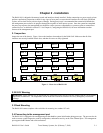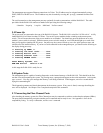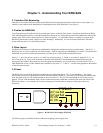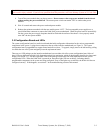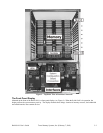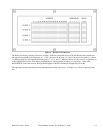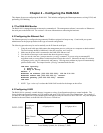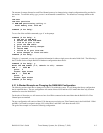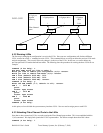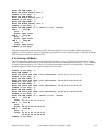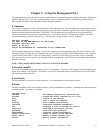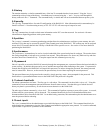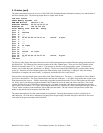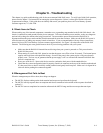The amount of storage allocated to each Fibre Channel port may be changed using a simple configuration utility provided in
the monitor. To enter this utility, type ‘partition’ on the monitor command line. You should see a message similar to this
one:
ram-san>
ram-san> partition
** RAM-SAN partitioning utility **
Total memory size: 8192 Mb
Command (h for help):
To see a list of the available commands, type ‘h’ at the prompt.
Command (h for help): h
a add wwn to LUN Mask
d delete wwn from LUN Mask
l link an fc port to LUN
p print the LUN table
q quit without saving changes
r resize LUNs
u unlink an fc port from LUN
w write changes to flash and exit
Command (h for help):
Using the ‘p’ command, you can view partition information for either a single port or the entire RAM-SAN. The following is
the LUN table for the example RAM-SAN hardware configuration shown above.
Command (h for help): p
Enter the LUN number (1-2, default is all): <enter>
LUN 1 -- 4096 Mb
ports: 5
access: Open access
LUN 2 -- 4096 Mb
ports: 9
access: Open access
Command (h for help):
4.3.1 A Worked Example on Changing the RAM-SAN Configuration
The following sections detail how to change size of the LUNs within the system. We will change the factory configuration
that is explained above. The new configuration will consist of three LUNs and have LUN masks that allow only four host
machines to access the RAM-SAN.
For the sake of discussion, we will assume we have four HBAs connected to the same fabric that the RAM-SAN’s Fibre
Channel ports are attached.
The new configuration will consist of three LUNs that are accessed using two Fibre Channel ports in the RAM-SAN. HBA 1
and HBA 2 will each be assigned a unique LUN, while HBA 3 and HBA 4 will share the same LUN.
The goal of the example is to create the following configuration:
RAM-SAN User’s Guide Texas Memory Systems, Inc. (February 7, 2003) 4-2



